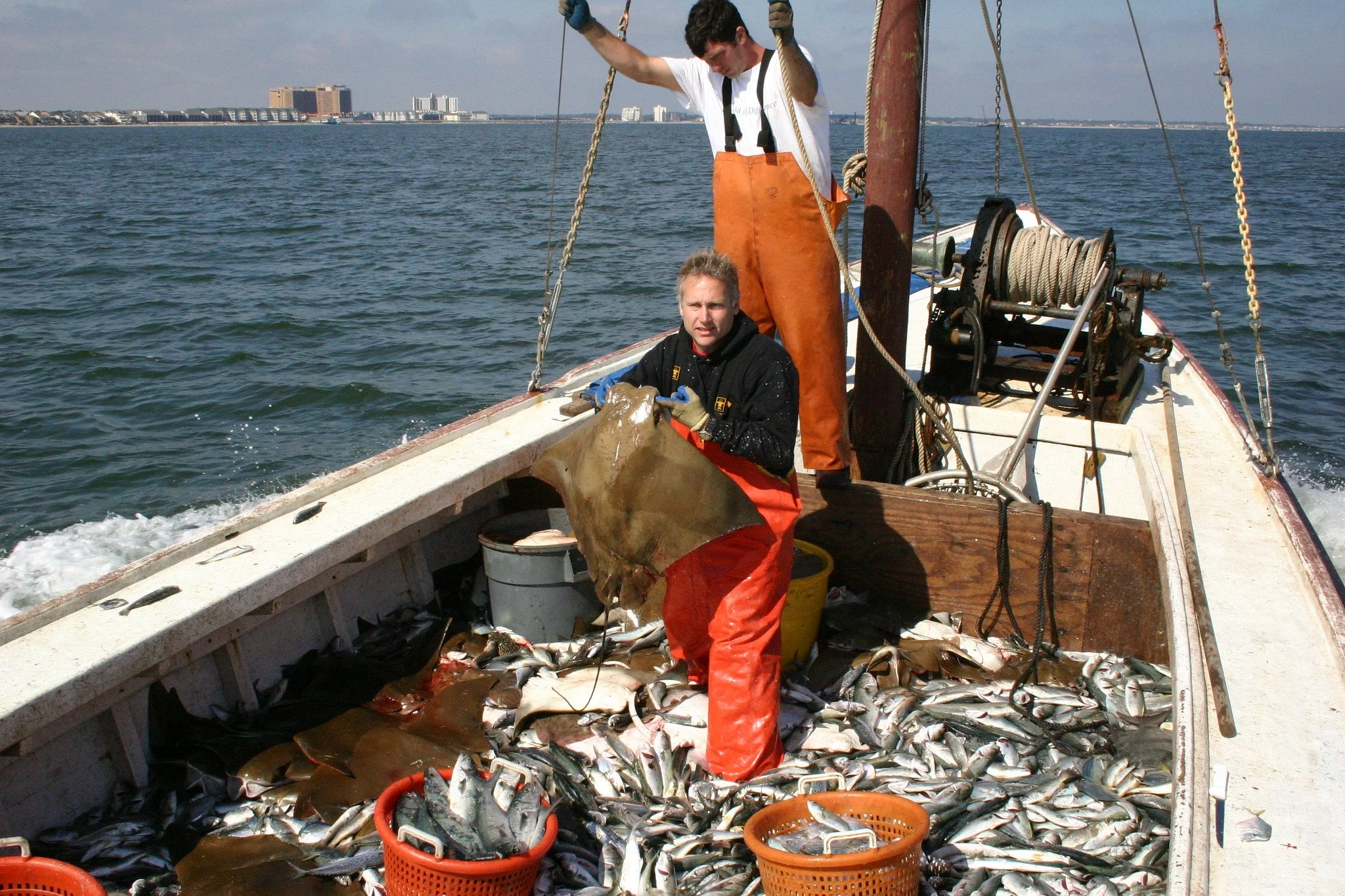Achieving bycatch-neutral fisheries
By Dr. Eric Gilman, Safina Center Scientist In Residence
Bob Fisher moves a cownose ray, which was caught as bycatch off the coast of Virginia. Photo by Virginia Sea Grant
Early in my career, while in the Northern Mariana Islands, I worked on designing and implementing methods to offset adverse environmental impacts of development projects on endangered birds’ wetland and forest habitats that could not first be avoided or minimized. Almost three decades later, I’m now applying these tools to mitigate fisheries bycatch of threatened species.
Fisheries targeting relatively productive species can have profound impacts on incidentally caught bycatch species that have low productivity, long generation lengths and other traits that make them vulnerable to anthropogenic mortality. Fisheries bycatch of threatened species is an obstacle to sustainable seafood production and hence to global food, nutrition and livelihood security.
Evidence-informed bycatch policy ideally should consider a suite of criteria when assessing alternative mitigation approaches. These include considering:
The evidence of the effects of mitigation methods on the catch and mortality risk of threatened bycatch species;
Costs to practicality, safety and commercial viability;
Multispecies conflicts that can result from some bycatch mitigation methods;
The feasibility of compliance monitoring given the influence of crew behavior on the performance of the bycatch mitigation method and the robustness of the management framework; and
In which tier of a sequential mitigation hierarchy that mitigation methods fall.
A sequential mitigation hierarchy framework first considers methods that avoid adverse impacts before those that minimize impacts, followed by those that offset residual impacts – those that could not first be avoided or minimized. This framework has been included in environmental impact assessment policies for wetlands and terrestrial and coastal natural resources since the late 1960s and has been recommended to achieve a goal of no net loss or net gain of biodiversity. It’s an old approach. But surprisingly this framework remains absent from international guidelines on fisheries bycatch management and has only recently been applied to guide decisions on managing fisheries bycatch.
Our team is nearing completion of defining theoretical approaches for direct and compensatory bycatch offsets. Two compensatory approaches are: banking, where restored, enhanced, created and, in rare cases, preserved biodiversity ‘units’ (e.g., area and quality of a particular habitat type, number of individuals of a population of a certain age class and sex) are quantified as credits that can be debited to provide compensation in advance of authorized impacts; and in lieu, fee-based mitigation, where the entity responsible for the biodiversity loss pays a public or private body to implement conservation activities.
A few illustrative examples of some of the issues we’re now researching include:
Defining options for conservation activities to achieve true (versus averted) offsets for the bycatch of pelagic fishes.
Accounting for moral and justice issues that can arise from some bycatch offset approaches.
Defining equivalence between residual impacts and offsets.
Designing offset programs so that they exclude irreplaceable biodiversity losses that can result from fisheries bycatch, such as from fisheries-induced evolution.
We’ll soon begin to design and then launch a pilot for the first ‘bycatch neutral’ fishery through implementing an in lieu, fee-based offset program. Watch this space for news on the first fishery to go bycatch-neutral through compensatory offsets.

